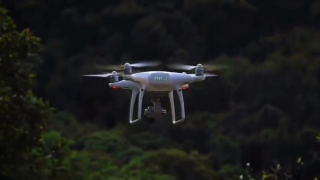
US Secretary of Defense Lloyd Austin (left) and Philippine Defense Minister Gilbert Teodoro sign the General Security of Military Information Agreement (GSOMIA) on November 18, local time.
By Yun Ruijing
US Secretary of Defense Lloyd Austin recently visited Australia, the Philippines, Fiji and other countries in the Asia-Pacific region. During this visit, Austin attended the US-Japan-Australia Trilateral Defense Ministers' Meeting, the ASEAN Defense Ministers' Meeting Plus(ADMM-Plus) and other events. He also met with leaders and defense ministers of some countries in the region.
This is the 12th visit to the Asia-Pacific region by Austin during his tenure.
What is the purpose of Austin's visit to the Asia-Pacific region during the transition between the old and new administrations of the US?
Chinese military observer Wang Baofu analyzed that over the past four years, the US Department of Defense's top leaders have visited the Asia-Pacific region more frequently than any other region. This clearly demonstrates the Asia-Pacific region's critical importance in the global strategic layout of the US. The purpose of Austin's visits this time is to consolidate the US military alliance system in the Asia-Pacific and advance the implementation of the so-called "Indo-Pacific Strategy".
During his visit to Australia, Austin attended the 14th US-Japan-Australia Trilateral Defense Ministers' Meeting, and jointly issued the US-Japan-Australia Trilateral Defense Ministers' Meeting November 2024 Joint Statement. The statement explicitly signaled further strengthening of defense cooperation between Japan and Australia, with the US serving as a pivotal link.
Wang believes that US-Japan-Australia trilateral cooperation is becoming one of the key ways for US involvement in Asia-Pacific affairs. The primary focus of this trilateral relationship lies in military cooperation areas such as intelligence sharing, joint exercises, and military training. The second is to pay attention to regional hot issues, especially the situation in the Taiwan Strait.
While attending the ADMM-Plus, Austin released the first US Department of Defense Vision Statement for a Prosperous and Secure Southeast Asia. Some media noted that this statement corresponds with the GSOMIA signed during Austin's visit to the Philippines, with the aim to further enhance the US' situational awareness in Southeast Asia.
However, Wang pointed out that there are significant differences between the US and ASEAN countries regarding regional security strategies, and therefore it is difficult for the two sides to deepen defense cooperation. The so-called "vision statement" remains largely theoretical and lacks practical content. ASEAN countries understand the US' real interest lies in establishing strategic dominance and military hegemony in the region. Despite Austin's continuous efforts to promote security cooperation between the US and Southeast Asian nations, there is still a long way to go to achieve these goals.
Austin concluded his Asia-Pacific tour with a visit to Fiji, marking the first-ever trip by a US Secretary of Defense to this South Pacific island nation. Wang analyzed that the US is incorporating South Pacific island nations into its strategic considerations, a move that warrants close international attention. Although Fiji has a small population, its security and strategic position is highly significant. The US has a clear understanding of this and plans to take a series of actions. First, the US seeks to strengthen logistical cooperation with Fiji's military and security sectors. Second, the US intends to establish a base in Fiji to deploy its military forces. However, the success of this plan depends on how to advance related cooperation by the new US administration.
Editor's note: Originally published on military.cnr.cn, this article is translated from Chinese into English and edited by the China Military Online. The information and opinions in this article do not necessarily reflect the views of eng.chinamil.com.cn.













